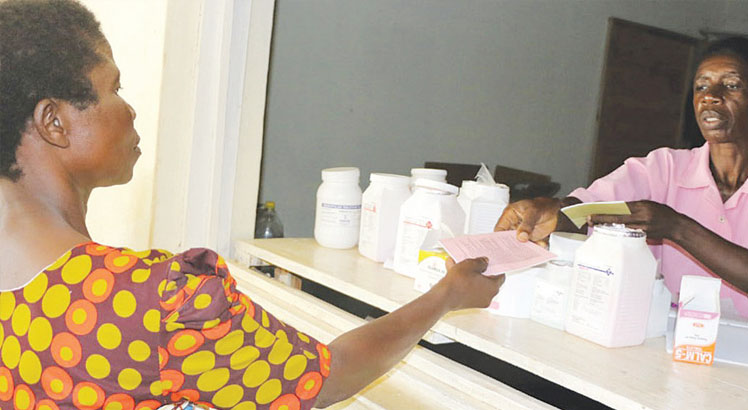Districts’ drug budgets shrink
District health budgets have been on the decline in both size and composition since the 2014/15 fiscal year, thereby negatively affecting allocations for drugs, an analysis on trends has shown.
The 10-year trend shows that while nominal budgets for medicines have generally increased, real budgets and expenditures have declined.

The data is based on the analysis presented by health economist Dr. Dominic Nkhoma at the recent Malawi Local Government Association (Malga) annual general meeting in Mzuzu.
He said there has so far been a slight improvement in the 2023/24 revised drug budget and the current 2024/25 drug budget, where figures have gone beyond the K25 billion mark as per the Drug Quantification Report requirement.
In the analysis, Nkhoma demonstrates that nominal total budgets increased from K34.65 billion in 2014/15 to K218.96 billion in 2020/21.
He said: “Salaries constituted the major cost driver for health services provision, averaging 55 percent and 59 percent of the total district health budget and expenditure, respectively, between 2014/15 and 2020/21.
“The medicines budget averaged 21 percent while ORT [Other Recurrent Transactions] averaged 20 percent over the period. The medicines budget consistently declined from 30 percent in 2014/15 to 18 percent in 2020/21.”
Nkhoma argued that the diminishing prioritisation was linked to increasing diffusion of responsibilities on the budget negotiation mandate among Ministry of Health, National Local Governance Finance Committee (NLGFC) and district councils.
This is corroborated by the 2023/24 health budget analysis by Unicef, Malawi Health Equity Network (Mhen) and Action Aid.
The Unicef analysis shows that from the 2019/20 and the 2020/21 fiscal years, the district drug budget stood at K16 billion, then dropped to K12 billion the following year before shooting to K17 billion in the 2022/23 fiscal year. It went up to K19 billion the following year.
Reads the Unicef analysis: “The drugs and ORT budgets are dwindling in real terms, considering the average inflation rate for 2022-23 of over 20 percent.”
However, there has been an increase in the previous and current fiscal year.
A Mhen 2024/25 health budget analysis also shows that the district drug budget was revised to K32.3 billion from the initial K20.2 billion that year, showing an improvement. This fiscal year funding has gone up even more.
“District drug budget up by 14 percent [from K32.3 billion to K36.8 billion] and this is recommendable as it is above the K25 billion requirements as per the drug quantification report,” reads the analysis.
Malawi’s per capita total health expenditure remains low at $40 against $86 as recommended by the World Health Organisation to deliver a minimum package of health interventions.
According to Mhen executive director George Jobe, government spends $9.50 (about K16 150) as health expenditure per Malawian, leaving the rest of the burden to donors.
“If we want to advocate for more drug budget, we should not compare healthcare workers, because we have huge deficits of about 50 percent. We need healthcare workers and the drugs too,” he said.
Meanwhile, Nkhoma has said devolving the budget with proper performance measures, incentives and sanctions could be a more sustainable strategy.
Officials from the Ministry of Health did not pick up calls to comment on the analysis.
In September 2024, public hospitals experienced stock-outs of essential medicines and medical supplies due to funding challenges, requiring an additional K15 billion drug budget.






) Hot girls are waiting for you on —– https://u.to/sYM6IA